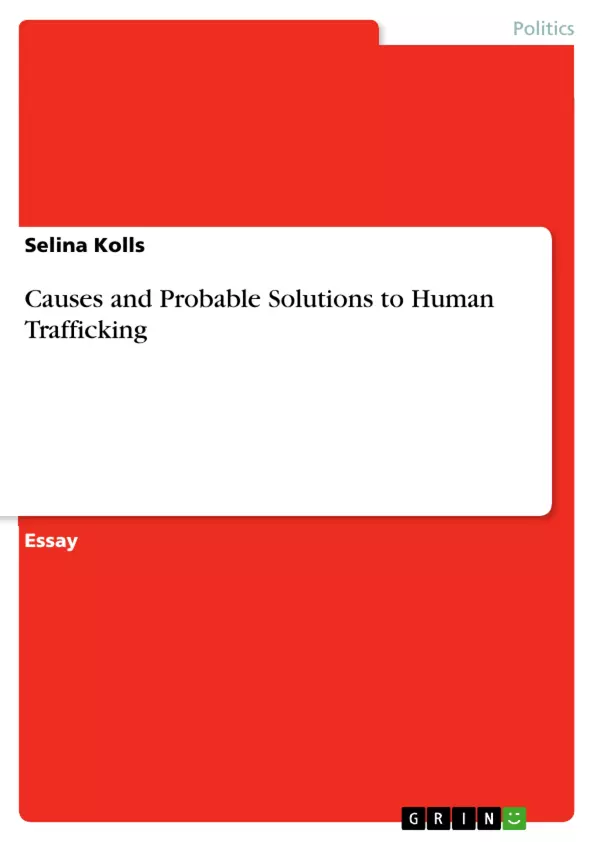According to McCarthy, human trafficking is the reincarnation of the old form slavery that took place in the 17th Century. Usually, human trafficking happens to young women in poor countries who are promised greener pastures if they migrate to another country- usually a more developed country. When they reach their new destinations, the victims are forced to indulge in prostitution by the same people that promised them a better life. The victims usually end up serving a better portion of their life abroad as sex slaves.
The question that arises is why these victims of human trafficking do not report their ordeal to the authorities. This text discusses the major contributions to human trafficing.
Frequently asked questions
What is the topic of the document "Causes and Probable Solutions to Human Trafficking"?
The document discusses human trafficking, comparing it to a modern form of slavery. It highlights how young women from poor countries are often lured with promises of a better life in developed countries, only to be forced into prostitution upon arrival.
What is the controversy discussed in the document?
The main controversy revolves around whether prostitution is a driving force behind human trafficking or simply a consequence of poverty. Some argue that the demand for prostitutes fuels trafficking, while others believe that people willingly enter prostitution to escape poverty in their home countries.
What are the arguments on the "pro-side" of the controversy (prostitution as a driver of human trafficking)?
Arguments in favor of the theory that Prostitution is a driver of human trafficking. Legalizing prostitution makes it harder to distinguish genuine sex workers from victims of trafficking. It attracts commercial sex workers from poorer countries, making them vulnerable to traffickers. Legalizing prostitution also increases profits for pimps, motivating them to traffic women from third-world countries due to their illegal status.
What are the arguments on the "con-side" of the controversy (poverty as the main driver)?
Those who oppose the link between prostitution and human trafficking argue that human trafficking would exist even if prostitution were criminalized. They point out that it thrives even where it's illegal. Moreover, victims of human trafficking are exploited in other sectors like domestic work and restaurants. Ultimately, poverty, greed, and lack of information are identified as the root causes.
What is the tentative thesis statement presented in the document?
The tentative thesis suggests that both prostitution and poverty contribute to human trafficking. Poverty makes individuals vulnerable in their pursuit of a better life abroad, while prostitution provides a recruiting ground for traffickers. Eradicating the vice requires better regulation of the commercial sex industry and poverty reduction.
What reference is used in the document?
The document references McCarthy, L. A. (2014). Human trafficking and the new slavery. Annual Review of Law and Social Science, 10, 221-242.
- Arbeit zitieren
- Selina Kolls (Autor:in), 2016, Causes and Probable Solutions to Human Trafficking, München, GRIN Verlag, https://www.grin.com/document/337850



